Principal's Report
Principal: Sherrin Strathairn - Ms. Strath
Assistant Principal: Julie Dunn - Ms. Dunn
Business Manager: Angie Kilvington
Office Manager: Louise McLean
First Aid/ Admin: Amber Taylor

Principal's Report
Principal: Sherrin Strathairn - Ms. Strath
Assistant Principal: Julie Dunn - Ms. Dunn
Business Manager: Angie Kilvington
Office Manager: Louise McLean
First Aid/ Admin: Amber Taylor
Dear Bundoora families,
Barb, Our Greenwood Drive Crossing supervisor.
This is Barb, our very friendly School Crossing Supervisor who works on Greenwood Drive. Barb knows the name of everyone and cheerfully greets children and families morning and afternoon.
Barb recently received a Certificate of Recognition for achieving 15 years of service. Thank you, Barb, for keeping our children and families safe.


Maureen, our Balmoral Ave Crossing Supervisor
You may have noticed that Maureen, our wonderful Balmoral Ave crossing supervisor has been missing from her post. I’m sorry to tell you that Maureen recently had surgery and is facing a long recovery. The school has sent her flowers and I know you join me in wishing Maureen a speedy recovery.
Diane Burrows
A huge thank you to Diane Burrows who has given up her time for 15 years to come and hear children read at our school, two days per week. Diane is now retiring from reading and we wish her well in her retirement.
Congratulations Jimmie and Chloe Quigley!
Jimmie and Chloe recently played in the Australian Northern Junior Primary Golf Tournament. This was their first tournament and they enjoyed themselves immensely. Congratulations, Jimmie, and Chloe!


School Concert
Congratulations must go to Mrs Nerida Newell for the fabulous school concert held in August. We are so lucky to have Mrs Newell running our Performing Arts program. She brings so much talent and enthusiasm to the role.
Thanks also to Mrs Penny Allibon, Mr. Daniel Kret and the band of helpers for the concert. Our teachers and education support workers all gave up their time to help backstage and front of stage over the two nights. We couldn’t have run the show without them.
Finally, thank you to our magnificent students who were so amazing in their performances.
It was a wonderful night and helped to build our sense of community further.












Staff Morning Tea Provided by Parents
Thank you so much for your generous donations to our staff morning tea two weeks ago. It was such a wonderful gesture to recognise our staff members and their hard work. It was very much appreciated.
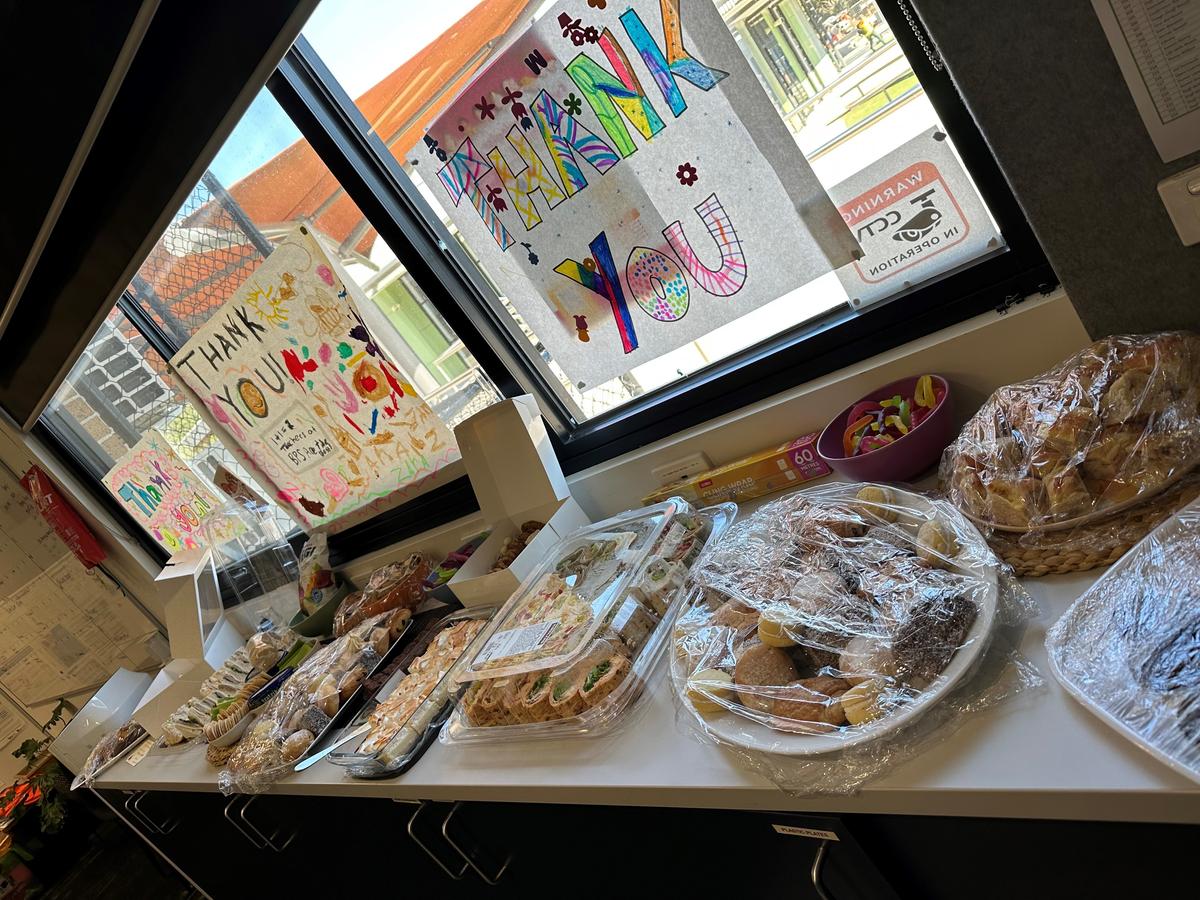

One Hundred Days of Prep
Congratulations to our prep team who went above and beyond to hold a very special ‘one hundred days of prep’ celebration for our children. The student and teacher costumes were amazing, and I was lucky enough to visit and see some of the activities our children participated in.
Grade 5/6 Camp
Our grade 5/6 children recently attended Camp Candlebark, participating in a wide variety of activities, including canoeing, archery, and the giant swing. The students enjoyed themselves immensely and I believe that even some of the staff members enjoyed a ride on the giant swing.
Thank you to our students for their excellent behaviour at camp.
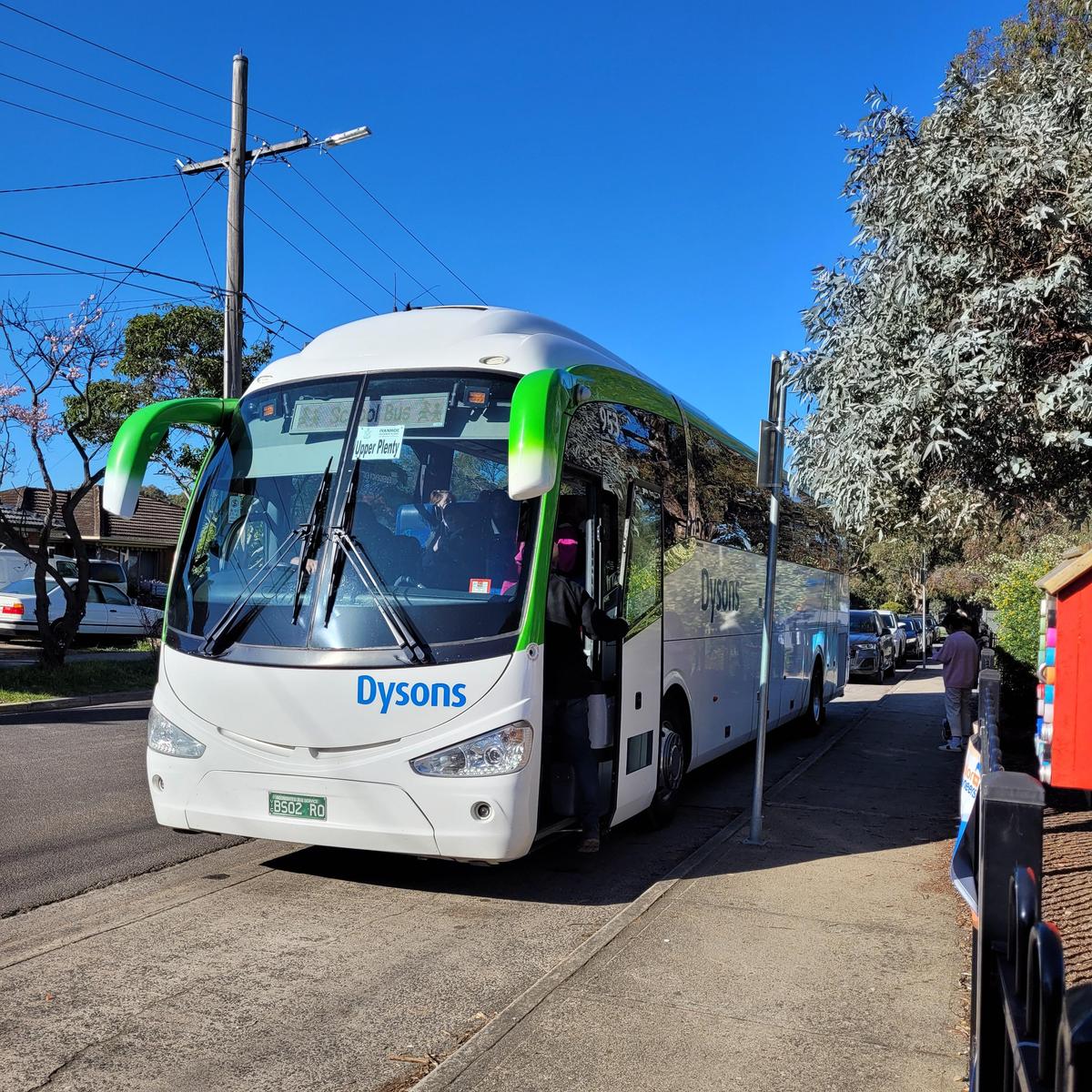











Book week
Book week was wonderful! The grand parade was held, and the huge variety of costumes was mind-blowing. Congratulations to everyone for making a big effort.
Staff members and children decorated their classroom doors, and I am amazed at the artistic talent in the school. It is well worth taking a walk around the school to see the fabulous Book Week themed doors.
Thank you to Mrs Penny Allibon for leading Book week this year.
District Athletics Day
We had 15 students receive ribbons ranging from 3rd to 1st and achieved an overall placing of 4th as a school. This is a fantastic effort considering the size of our school. Congratulations to all and thank you to Emily Knights for her assistance with the long jump event.
Parent Teachers Interviews
Thank you to all the families who were able to login for parent teacher interviews.
I have received feedback that some parents prefer the event to be in person, which I completely understand.
Our thinking behind the online interviews is:
On Friday morning we were able to hold professional development for both teachers and education support staff.
Our teachers worked with Amy Armstrong and Nyree Potter (Department) to present professional development on the new maths curriculum.
Education Support staff worked with a team from Calm at the Forefront about ‘Understanding Neurodiversity – Ensuring all our children Thrive.’ The workshop explored:
Teachers will have the same training in term four.
Kindy Session 4
We had our final kindy session this week. It was lovely to see our future prep students come and have some fun. In this session they read Elmer the elephant and did some wonderful art.

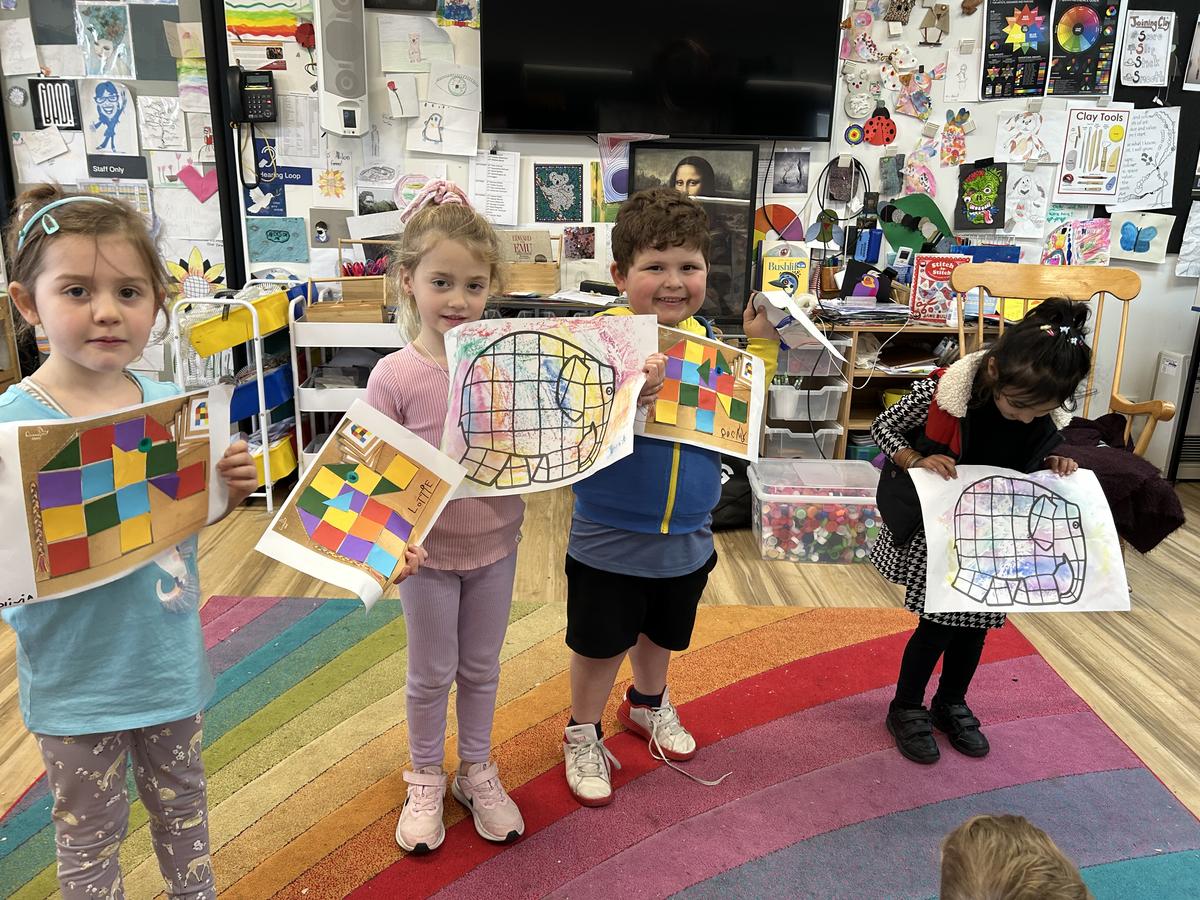






Education Support Staff Appreciation Week
Last week we celebrated ES appreciation week with our amazing ES team. Teachers and leadership hosted a morning tea and thanked our team for their work. We could not run the school without this amazing team! Our ES members are flexible and supportive, care for our students, and work alongside teachers to provide the best possible outcomes for our students.
Our ES team members are: Michelle Gomez, Heidi Smith, Julia Shea, Kim Mavrogiannis, Noor Hussein, Jeremy Cass, Susie Hull, Nicole Morton, Kristy Rowe, Jules De Angelis, Alex Biggs, Amber Taylor, Jessica Skerry, Val Petrovksi, Louise McLean, and Angie Kilvington.
Thank you ES team!

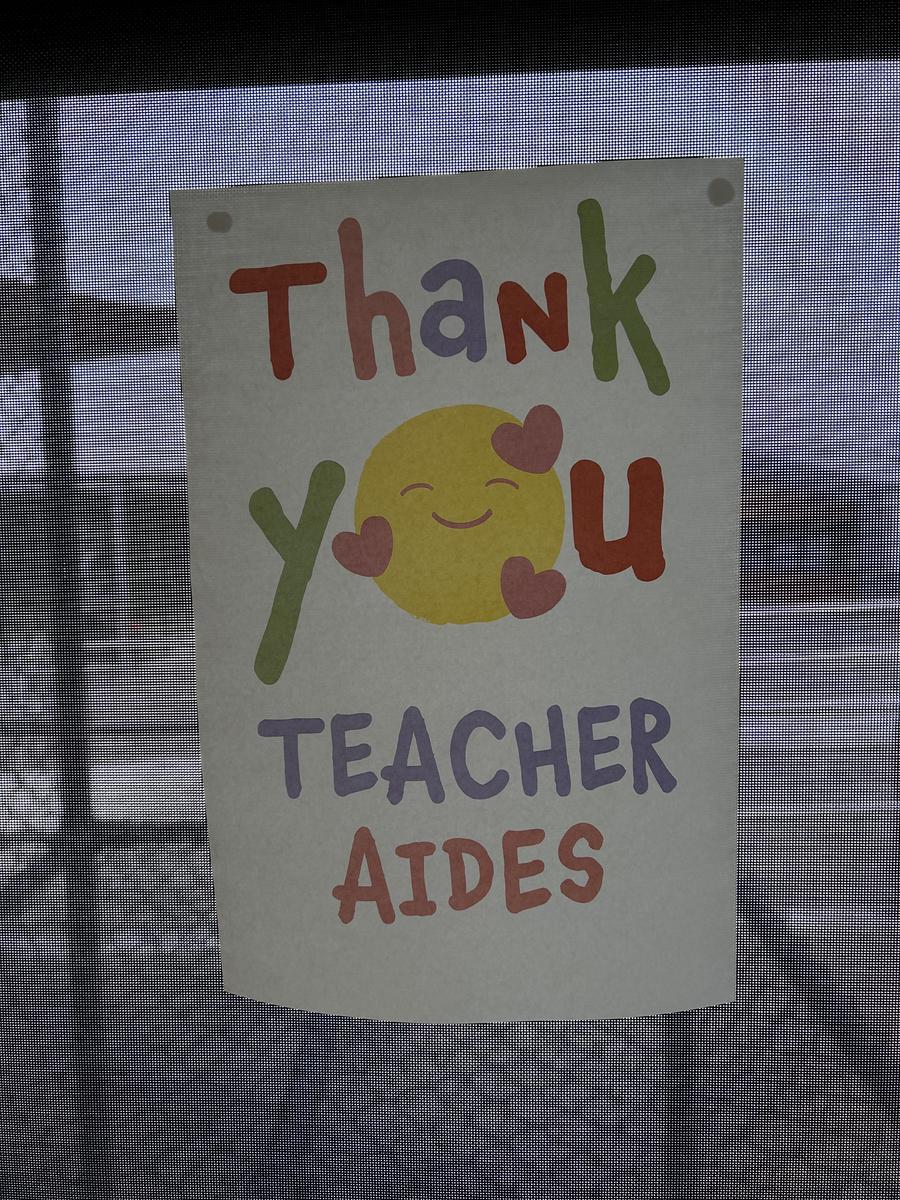


Grade 5/6 Water Safety
Last week many of our year five and six students have been participating in swimming and water safety. Under Department of Education guidelines, by the end of year 6 it is anticipated that students should be able to demonstrate the knowledge and skills identified in the Victorian Water Safety Certificate.
At Bundoora Primary School, students in year one to four participate in a week of intensive swimming, while students in year five and six focus on the Water Safety aspect.
Father’s Day Breakfast
What a wonderful event at Bundoora PS last Friday! It was great to see so many fathers, grandfathers and special people enjoying breakfast and a chat.
Thank you to Dayna and her team for all your work: setting up, cooking, organising the event, serving and cleaning up. Events like this are a testament to what a strong team we are at Bundoora Primary School. Thank you to our staff members who came along to help out also. Your service to the community is much appreciated.
Finally, thank you to Bundoora Secondary College for providing the coffee, hot chocolate and poffertjes and friendly service. One young man went above and beyond, arriving at 6:30 and helping to set up tables and chairs, and then pack up at the end. Thank you, Mohammed!
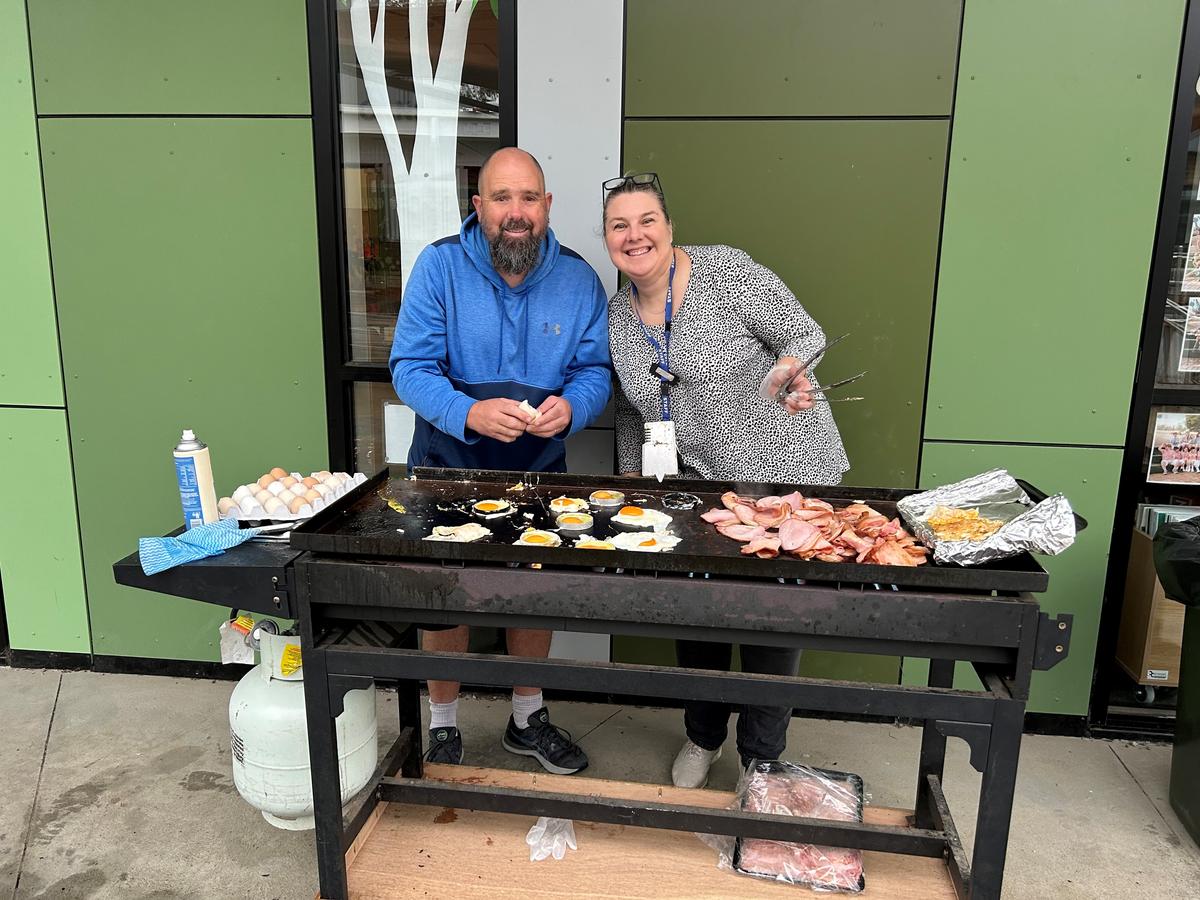















STEM Teacher
As many of you may be aware, I have been unable to employ a STEM teacher this year. We focused on Auslan, as another of our school priorities, during terms one and two before our teacher was deployed with her husband (Defence). Since that time, I have advertised on four occasions but been unable to attract even one application for this position.
I have also contacted other schools to see if their STEM teachers had capacity to work with us but to no avail.
Going forward, we have extended the days of work for Mrs Karen Oke, who has kindly agreed to teach library on her extra day. We are also looking for CRTs to ensure that no child misses out.
I hope to be able to employ a STEM teacher for 2024.
Celebration Week:
As you know next week has many fun things happening, Dot Day, R U Ok Day and Footy Day to celebrate all these important days we will be allowing our students to have some more fun in classroom and pick a fun activity to do. This might be watching a movie, include inside or outside games to end our term with more fun!
Footy Day
The last day of term will be our annual Footy Colours Day. Don’t forget to dress up in the colours of your favourite footy team and join us for the fun.
Last day of term
Friday 15th of September is the last day of term three, finishing at 1:45 pm.
The first day of term four is October 2nd.
Neurodivergent family hangouts
Would you like to have fun and build friendships with other neurodivergent families? We are checking interest in a regular social meet up at the the school outside school hours for kids to play and parents to get to know each other.
Neurodivergent simply means a brain that isn't "typical". This covers autism, ADHD, giftedness, dyslexia and more. Around 15-20% of the population are neurodivergent, different brains are a normal part of human diversity. This group is strongly positive and inclusive and you don't need a formal diagnosis to join in.
BPS is proudly supporting this parent-run informal activity.
Call or email the office to let them know you are interested in the family hangout. Then we will be in touch to get preferences for days and times.
CRTs and Class Splits
I know there is angst in the community about the number of class splits we have had when staff members are away.
There is currently a state wide shortage of of (relief) teachers. Mrs Dunn has approached three different angencies this term in order to source additonal relief teachers but each agency has turned us down as they currently can't meet the needs of the schools they already work with. Additional methods we have taken to try to relieve the sitation are:
An additional problem we are facing is that the CRTs we do manage to book often call in sick on the day they are booked. This is then too late to book another replacement.
We have discussed this problem as a staff group and I have asked teachers to think about other ways we can engage students when splits are occurring so that student learning is not affected.
We will continue our best efforts to employ CRTs and ask for your understanding with the current situation.
Snitches get Stitches
This small phrase is currently causing major issues in our school yard. There is a perception amongst senior students that snitching is wrong, with threats to deal with anyone who snitches. This idea is slowly filtering down to junior grades.
What this means in the school yard and classroom is that children who are having difficulties will not tell teachers, therefore teachers cannot help.
We are encouraging students to walk away when an issue occurs and seek teacher help. We do not condone retaliation, even though students may feel it is in self-defence.
I ask that you speak to your student and reinforce that if someone is being dangerous or hurting others it is important to tell a teacher.
Parenting an Anxious Young Person
I recently read an interesting article on parenting an anxious young person by an organisation called Calm Kids Central. The article talks about how we help, and how we ‘might’ hinder our children who suffer from anxiety.
I quote:
“Biological factors play an important part in causing or contributing to anxiety in young people. Research has suggested that there is a genetic component and possibly physiological differences. Other areas of research have found differences in infant behaviour between children who then grow up to be more anxious.
All of this research indicates that at least some tendencies towards anxiety in humans is ‘hard wired’ into some young people much more strongly than others.
However, there are other research studies which show that aspects of a young person’s environment (in other words what happens around them) also influence their anxiety. Studies have found factors such as early traumatic life experiences, friend and peer relationships, school life, sleep quality, nutritional intake, exercise and technology use also contribute to how much anxiety children and young people experience.
Not surprisingly therefore, most psychologists believe it is a combination of biological and environmental factors which cause anxiety in young people.
It’s with this background and context that I’d like to focus in this article on just one particular aspect of a young person’s environment which appears to influence anxiety – and this is parenting behaviours.”
I don’t know about you, but as a parent of an anxious young person, the opening to this article made me stop and think. Do I enable my child’s anxiety? Do I give encourage my child to push themselves slightly out of their comfort zone? Or do I just assume it will be too difficult and not encourage them to even try?
I have shared the full article at the end of this bulletin for those who are interested. I am not sharing this article to promote this as the only way to work with an anxious young person, but rather to open our minds to what our young people are experience post-Covid. Sometimes a little discomfort in our own reflection, speaking for myself, can open a new window of thought.
Have a wonderful weekend!
Sherrin Strathairn
There is no doubt that biological factors play an important part in causing or contributing to anxiety in young people. Some research has suggested there is a genetic component to anxiety (e.g. identical twins are more likely to have similar rates of anxiety than non-identical twins). Other areas of research have identified physiological differences (for example heart rate reactivity, a number of brain structures/processes) between more and less anxious children. There are other areas of research which have found differences in infant behaviour between children who then grow up to be more or less anxious.
All these fields of study put together indicate that at least some tendencies towards anxiety in humans is “hard wired” into some young people much more strongly than in the average young person.
However, there are other research studies which show that aspects of a young person’s environment (in other words what happens to and around them) also influence their anxiety. Studies have found factors such as early traumatic life experiences, friend and peer relationships, school life, sleep quality, nutritional intake, exercise, and technology use – also contribute to how much anxiety children and young people experience.
Not surprisingly therefore, most psychologists believe it is a combination of biological and environmental factors which cause anxiety in young people.
It’s with this background and context that I’d like to focus in this article on just one particular aspect of a young person’s environment which appears to influence anxiety –and that is parenting behaviours.
I was prompted to write about this as I’ve recently read a 2014 paper by Kendall and colleagues which summarized many studies which have now examined the ways in which we as parents/caregivers respond, relate to, behave around, and talk to children/young people potentially help – and potentially worsen – anxiety in young people.
This is a sensitive subject. While it’s encouraging for parents/caregivers to know their behaviour can potentially reduce their child’s anxiety, it’s hurtful and upsetting to think what they are doing may be inadvertently making things worse for children. Before I write any more about this then, let’s just recap what we have seen so far - anxiety is not caused by parenting behaviours, but instead is very likely to be caused in party by biological and physiological tendencies and factors.
However I believe the information covered by Kendall’s meta-analysis is still valuable for parents to know and shouldn’t be kept from parents. When we know which parenting practices might help and which might hinder the experience of anxiety in our young people, we can be reassured to know when we are doing as much as we can – or take steps to change some of what we do if needed.
Below are the four parenting approaches or behaviours research suggest may be *associated with anxiety in at least some young people.*Note my emphasis on the word “associated” with - at the end of the article I’m going to talk about how “associated with” doesn’t mean “cause” - but just hold this thought for now.
1. Parental Control
The idea of “parental control” refers to how much parents/caregivers try to control what a child does, thinks, feels, says and the situations they experience. Parental control can be measured by both laboratory studies (parents and children being observed together) and questionnaires about parenting (completed by both parents/caregivers and children/young people).
Parents who score “high” on measures of parental control are more likely have children who are more anxious, and who become more anxious over time, than parents who score lower on this measure. This kind of parenting includes the following.
Although it will depend greatly on the age of the young person, here are some sentences parents with “high parental control” might often use:
You can’t do that, it’s too risky. Tell me everything. I will make these decisions. You’re not old enough to do that. I need to tell you exactly how to do that. I need to be there to watch you. I must be involved in that. There’s a lot that could go wrong here, I should be involved.
Interestingly, parents/caregivers who are high on parental control are more likely to experience more anxiety themselves.
In contrast, parents who score lower on parental control have children with lower levels of anxiety.
This means they allow their children to have a range of experiences (even those with a small amount of manageable risk), allow their children to make age-appropriate decisions, to allow them privacy in their experience of thoughts and emotions, allow them to have their own experiences and relationships without having to know and be involved in every aspect of them.
Again, it will depend greatly on the age of the young person, but here are some sentences parents with lower parental control might use:
It’s up to you. You are old enough to decide. Would you like to choose. You can tell me about that when you are ready. How do you think you should manage that? I can help you if you need it, but you can try first.
2. Warmth and acceptance towards young people
The term “parental warmth” refers to how much love, empathy, affection, positivity, and acceptance parents/caregivers show towards their children/teens. Again, parental warmth can be measured via observation and coding of actions between parents and children, and it can also be measured by questionnaires.
Low levels of parental warmth has been found in most studies (but not all) to be associated with higher levels of anxiety in children.
Low levels of parental warmth might look like the following:
Low warmth parenting might include repeated use of sentences like:
Toughen up/stop crying(No response) when a child has helped, tried hard or done something well don’t care. Too bad I’m not interested. Silence (when child is upset)
Higher levels of parental warmth has been found (again, in most studies) to be associated with lower levels of anxiety in young people. High levels of warmth from parents includes telling children/teens they are loved, showing them physical affection, showing empathy when they are hurt or experiencing negative emotion and avoiding harsh criticism or physical punishment. They might use sentences such as:
I love you. I enjoy being with you. I appreciate you I know you are trying. I admire you(Hugs/pats on the shoulder/open body language/eye contact etc.)I care about you. I’m sorry this is tough for you.
3. Accidental rewarding or reinforcing of young people’s anxious (or “avoiding”) behaviour
A third factor studies have found to be associated with anxiety in young people is how parents/caregivers respond when their children are feeling anxious or acting in an anxious way. Studies have found that accidentally rewarding or reinforcing of anxious behaviour by parents/caregivers is associated with more anxiety in young people over time.
Here are some examples of rewarding/reinforcing anxious behaviour:
Accidentally rewarding or reinforcing anxious behaviour might include sentences such as:
You feel anxious? /That happened? That’s terrible/awful. If you are worried, you shouldn’t ever do it. Wait until you feel confident before you try things. I’ll help you get out of that/avoid that situation. You don’t have to do anything that feels scary. We must fix this, it’s not okay that you feel anxious.(When child/young person tells them about anxiety) Oh no, that’s terrible(When child/young person tells them about difficult situations they feel anxious about) How awful
In contrast, parental reinforcement, and encouragement of brave and confident behaviour in children is associated with less anxiety in young people over time.
Parents/caregivers who reinforce/encourage confident behaviour are caring towards their children when they are anxious, but act and speak calmly to them about their anxiety, and gently push their children/young people to do things (if they are important) which are initially scary or worrying for a young person. They might say sentences such as:
You can do it’ll help you do this – bit at a time. I’m sorry you feel anxious, but I know this is safe. I will be there for you, but this is an important step for you to take. I believe you can do this I’m sorry that happened. Feeling really anxious is hard. I do believe you can handle it. Feeling worried is tough. It happens to lots of people.
4. Repeatedly acting in anxious ways around young people
The fourth parenting behaviour studies have found to be associated with anxiety is called “modelling behaviours”. In other words, children and young people who act see their parents/caregivers repeatedly act or talk in highly anxious ways themselves are more likely to experience higher levels of anxiety themselves.
Young people who see parents/caregivers act in confident ways and managing worry and anxiety are less likely to be anxious.
The relationship between parenting behaviours and anxiety in children is not simple.
To summarise so far: research tells us that there are four parenting behaviours associated with higher anxiety in children/young people - high parental control, low parental warmth, reinforcement/accidentally rewarding anxious behaviour and repeated modelling of anxious behaviour.
However, there are two important ideas to keep in mind about this research.
The first idea relates to what I said at the beginning - “associated with” doesn’t mean “causes”. Most of the studies (not all) referred to above are what are called “correlational” studies. In other words, particular parenting behaviours have found to be higher in parents of children with higher anxiety, but we don’t know for sure these behaviours cause anxiety.
In these studies, we can’t be sure what comes first: it’s quite possible that anxious children and teens might cause the parenting behaviours above – not the other way around.
For example, children with a high-level anxiety might have more frequent negative experiences with the world around them from a young age (e.g. they feel more upset, more often), which might then cause parents/caregivers to need exert more control more of their children’s experiences in order to reduce the child’s distress. In other words, it might be that higher child anxiety causes higher levels of parental control – not the other way around.
Another potential way this might work is the following: children who are very highly anxious might cause their parents to show more concern about anxiety (because these parents know more about how difficult anxiety is) than parents without anxious children. In other words, it might be that higher child anxiety causes higher level of parental reinforcement of anxiety – not the other way around.
As you can see, it is likely that anxious children/young people who are anxious prompt their parents/caregivers to act quite differently compared to parents of confident children/young people. If this is the case, it might then perpetuate anxiety in children- prompting more changes in parents.
There is likely to be a circular loop – children influence parents, who influence children – and so on
The second factor to consider is – as stated at the beginning – parental behaviours is only one factor which is linked with anxiety in children and young people. There are also many areas of research which have linked other factors to higher anxiety in children. For example, as we looked at in the beginning there are other - very important purely biological and other (non-parenting) environmental causes of anxiety in young people. For some young people it is likely that biological and non-parental environmental factors is what causes most or all of their anxiety.
Where to from here?
For parents with anxious children and young people, I think it’s important to first acknowledge that children/young people’s anxiety is not our fault. Let me repeat that - Parents are - NOT TO BLAME.
For many children, their physiological make-up – and their environment - has made it highly likely they were going to experience anxiety regardless of what we as their parents do (or did).
Nevertheless, as parents/caregivers we should take control of what we can. This means being conscious of trying to act around and with our children and young people which gives them the best chance of helping them manage their anxiety over time.
The research above tells us in part what to do. Specifically, we should try - when and where we can - to do the following:1.Provide an age-appropriate level of independence and autonomy: allow kids and teens to make decisions, have time by themselves/with peers, problem solve independently, have their own chores and manage life tasks (without us hovering or directing unnecessarily).
2.Show a high level of warmth and acceptance towards our young people: tell them they are loved, show them we enjoy being with them, find ways to praise and recognize their skills and be physically warm and affectionate.
3.Help, encourage and support our children to face their fears (bit at a time, and gently): confidently assume they can do things, don’t allow them to avoid feared situations for the long term, don’t provide too many opportunities for them to opt out, avoid or stay away from (important) life or social situations.
4. Tell (and show) young people know that being anxious or worried is not terrible: tell them we believe they can cope with feeling worried and being in difficult situations, using a neutral or positive facial expression and confident tone of voice when talking about anxiety.
5.Get support for our own anxiety and stressors: actively work on our own anxieties and stressors so that children and young people can see us act in brave, confident and self-assured ways in a range of life situations.
Finally – remembering the importance of looking after ourselves
If you have a child/young person who struggles with anxiety, it’s essential to be kind to yourself.
Parenting a child/young person with a tendency towards anxiety or an anxiety disorder is tough. There is a significant amount of additional parental work involved – teaching, reassuring, coaching, and encouraging – compared to support a non-anxious child. All of the above suggestions are much harder to do with children who are anxious compared to children who have a less anxious temperament. And doing this work at the very least is wearying. Much of the time it is also saddening, worrying, and disappointing.
This means it is important to find support, avoid criticizing yourself, notice the positive steps you are taking and do kind things for yourself.
When we practice high levels of self-care in this way, our children and young people will benefit too.
If you have a primary aged child who manages anxiety, they might find our "Calm Kids" online anxiety course helpful. It includes animations, activity sheets and posters - and unlimited online access to a panel of child psychologists. For more information, go to www.calmkidcentral.com
Parental Involvement: Contribution to Childhood Anxiety and Its Treatment